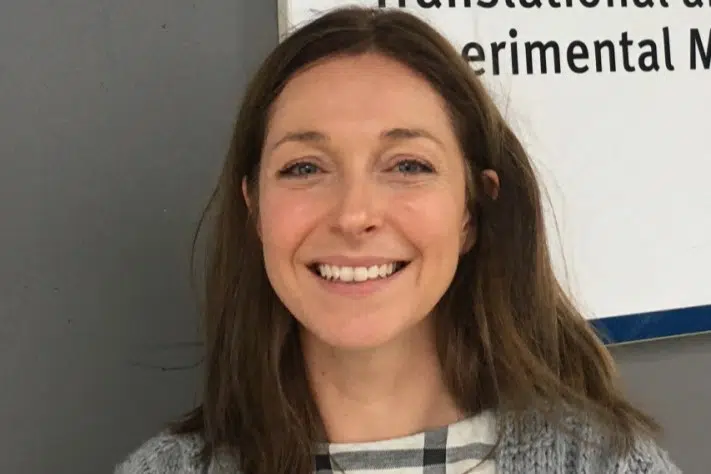13th May 2022
In support of World Retinoblastoma Awareness Week 2022 (8-14 May 2022), we are delighted to share a Voices Blog by Petra Maxwell, Information & Research Manager, Childhood Eye Cancer Trust (CHECT).

Petra Maxwell, Information & Research Manager, Childhood Eye Cancer Trust (CHECT)
The Childhood Eye Cancer Trust (CHECT) has released ten years of figures from over 300 families tracking the diagnosis of retinoblastoma in the UK, to mark World Retinoblastoma Awareness Week 2022 (8-14 May 2022).
Retinoblastoma, or Rb, is a rare and aggressive form of eye cancer that affects babies and young children, mainly under the age of six. Around 40-50 cases are diagnosed a year in the UK – or one child a week. It represents 3% of all childhood cancers and 10% of cancers in babies under the age of one in the UK. Around 98% of children survive retinoblastoma in the UK but early diagnosis is crucial in order to save a child’s eyes, sight and life.
In 2012, as part of its aim to reduce the delays in diagnosis of retinoblastoma experienced by some families in the UK, CHECT began to collect information from parents through a survey called ‘Pathways to Diagnosis’*. It was hoped that, by quantifying some of the anecdotal feedback from families, the survey would highlight where hold-ups were occurring.
Very quickly it became apparent that the range of experience was huge: from families who were referred to one of the two specialist Rb centres in the UK** within days of noticing their child’s symptoms; to families who spent over six months and had numerous visits to various healthcare professionals before receiving a diagnosis.
It was clear that health visitors had an important role to play, as 10% of parents with children later diagnosed with Rb, initially turned to their health visitor with their concerns.
Overwhelmingly, a white glow spotted in the child’s eye (rather than in a photograph) is the most common symptom that parents report noticing at 60%. The figures also reveal, however, that the lesser-known symptom, a squint, was reported in over a third of cases (34%). A white eye in a photo was the third most common symptom at 16%.
In 2017, the iHV teamed up with CHECT to add a resource called ‘Signs & Symptoms of Retinoblastoma and knowing what to look for’ to their Good Practice Points (GPP) series. As well as giving a general background to the disease and highlighting the most common signs of retinoblastoma, it also contains information on appropriate routes for onward referral. We hope you have found this helpful. The resource has now been updated for 2022 – it is renamed to ‘GPP – Retinoblastoma (eye cancer in babies and children)’ and iHV members can access it here.
For more information on signs and symptoms and appropriate referrals go to www.chect.org.uk/hv .
To read more about trends in diagnosis over the last ten years go to https://chect.org.uk/pathways-to-diagnosis/
Petra Maxwell, Information & Research Manager, Childhood Eye Cancer Trust (CHECT).
NOTES
- * CHECT’s Pathway to Diagnosis figures were gathered from the parents of 334 children diagnosed with Rb in the UK between 2012 and 2021. This information was recorded by support workers during the course of their conversations with families, and focussed on whether the families had any prior awareness of retinoblastoma; the signs they noticed in their child’s eyes that prompted them to seek help; and the actions taken by the healthcare professionals they consulted.
** The two specialist retinoblastoma centres in the UK are at Birmingham Women’s and Children’s Hospital, and the Royal London Hospital.
- 8-14 May is World Retinoblastoma Awareness Week 2022. For more information go to https://chect.org.uk/rb-week-2022/
- The Childhood Eye Cancer Trust (CHECT) is a UK charity dedicated to helping people affected by retinoblastoma. It:
- Provides ongoing support and information to families and individuals.
- Funds research into the prevention and treatment of retinoblastoma.
- Raises awareness among health professionals and the public.
- Influences policy to improve services for patients.


